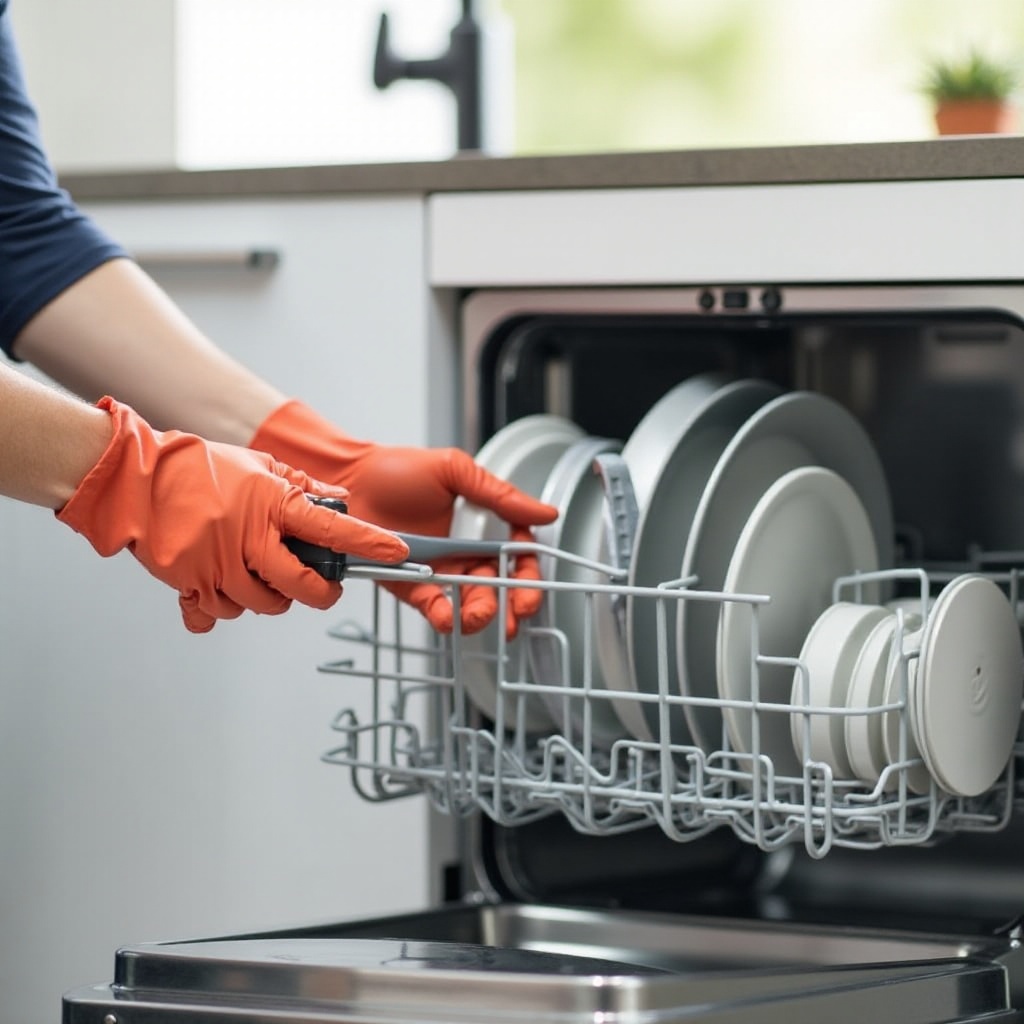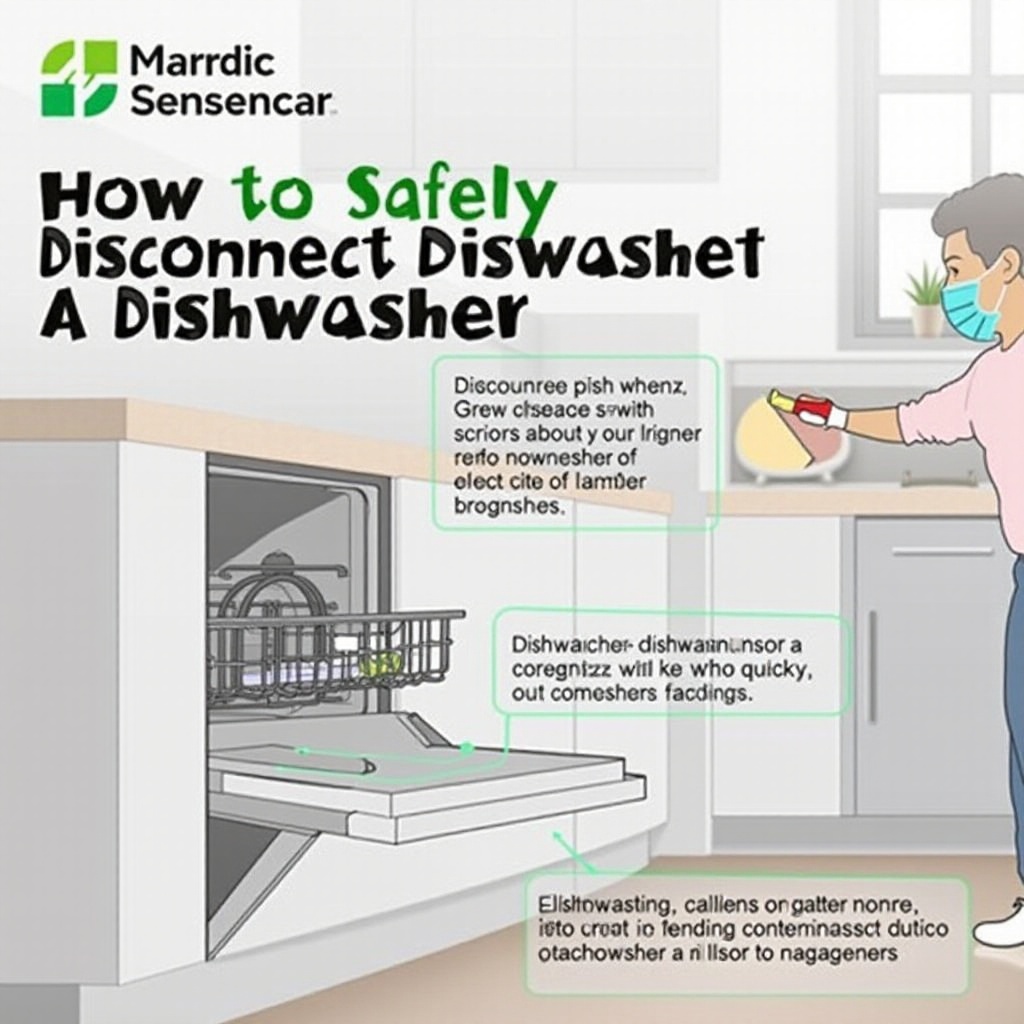Introduction
Disconnecting a dishwasher might seem daunting, but with the right guidance, it can be a straightforward task. Whether you're replacing an old dishwasher, remodeling your kitchen, or simply moving, knowing how to disconnect a dishwasher safely is essential. This guide will walk you through the necessary steps to ensure the process is smooth and hassle-free.

Preparing to Disconnect
Before you start, proper preparation is key to ensuring safety and efficiency.
Turning Off the Power Supply
The first step is to turn off the power supply to the dishwasher. Locate the circuit breaker that controls the dishwasher and switch it off. This prevents any electrical accidents during the disconnection process.
Shutting Off the Water Supply
Next, you need to shut off the water supply. Find the valve beneath the sink or close to the dishwasher and turn it clockwise to stop the water flow. This step is crucial to avoid any water spills.
Gathering Necessary Tools
To make the process easier, gather all the required tools in advance:- Wrench or pliers- Screwdriver- Bucket- Towels or sponges
Step-by-Step Disconnect Process
With preparations complete, you can now proceed with disconnecting the dishwasher.
Emptying the Dishwasher
Start by emptying the dishwasher. Remove all the dishes, racks, and any other items inside. This makes the unit lighter and easier to handle.
Disconnecting the Power
Unplug the dishwasher from the electrical outlet if it's accessible. If not, follow the manufacturer's instructions to disconnect the power directly from the wiring.
Detaching the Water Supply
- Place a bucket underneath the water supply valve.
- Use a wrench or pliers to loosen the nut connecting the supply line to the dishwasher.
- Carefully detach the hose and allow any remaining water to drain into the bucket.
Removing the Drain Hose
- Locate the drain hose, usually connected to the sink's plumbing or a garbage disposal.
- Use a screwdriver to loosen the clamp securing the hose.
- Gently pull the hose free and be ready to catch any residual water with a towel or sponge.
Loosening Mounting Brackets
- Open the dishwasher door and locate the mounting brackets at the top or sides.
- Use a screwdriver to remove the screws holding the brackets in place.
- Keep the screws in a safe place for reinstallation or disposal.

Removing the Dishwasher
Now that everything is disconnected, it's time to pull out the dishwasher.
Safely Pulling Out the Dishwasher
- Carefully slide the dishwasher out from under the countertop.
- Use towels to protect your flooring from scratches.
- Ask for assistance if the unit feels too heavy or awkward to handle alone.
Inspecting and Cleaning Connections
Once the dishwasher is out, inspect the connections for any signs of wear or damage. Clean the surrounding area to remove any debris or water stains.

Troubleshooting Common Issues
During the disconnection process, you may encounter a few challenges. Here's how to handle them.
Handling Leaks and Water Spills
If you notice any leaks, use towels to soak up the water immediately. Check all connections to ensure the water supply is properly shut off.
Addressing Stuck or Rusted Connections
If bolts or connections are stuck or rusted, apply a penetrating oil to loosen them. Let the oil sit for a few minutes before attempting to remove the connections again.
Additional Tips and Safety Precautions
Ensure a smooth and safe disconnection process with these extra tips.
Ensuring a Safe Work Environment
Keep your work area clear and well-lit. Wear protective gloves and eye protection to avoid injuries from sharp edges or electrical components.
Proper Disposal of Old Parts
Dispose of old hoses, brackets, and other parts responsibly. Check with your local waste management for guidelines on recycling or disposal.
Conclusion
Disconnecting a dishwasher doesn't have to be complicated. By following these steps and taking necessary precautions, you can ensure a safe and efficient process. Whether you're replacing an old unit or preparing for a kitchen remodel, proper disconnection is key to avoiding damage and ensuring a smooth transition.
Frequently Asked Questions
How long does it typically take to disconnect a dishwasher?
Disconnecting a dishwasher usually takes about 30 to 60 minutes, depending on your experience and the accessibility of connections.
Do I need professional tools to disconnect a dishwasher?
No, you generally don't need professional tools. Basic household tools like a screwdriver, wrench, and pliers are sufficient.
Can I reuse any old parts for installing a new dishwasher?
It's possible to reuse some parts, but it's best to use new hoses and clamps to ensure a secure and leak-free installation of the new dishwasher.
